#defoliation
Explore tagged Tumblr posts
Text




「落ち葉」
#fallenleaves#defoliation#deadleaves#autumnleaves#autumn#nikoncreators#nikond300#photograph#photography#落ち葉#落葉#枯れ葉#紅葉#秋#写真#いつかの写真#写真好き#写真で伝えたい私の世界#写真好きな人と繋がりたい#歩楽里写真部
1 note
·
View note
Text
The ability of ethylene gas to cause defoliation in birch trees is shown in Figure 22.23.


"Plant Physiology and Development" int'l 6e - Taiz, L., Zeiger, E., Møller, I.M., Murphy, A.
#book quotes#plant physiology and development#nonfiction#textbook#ethylene gas#ethylene#birch trees#defoliation#betula pendula
0 notes
Text
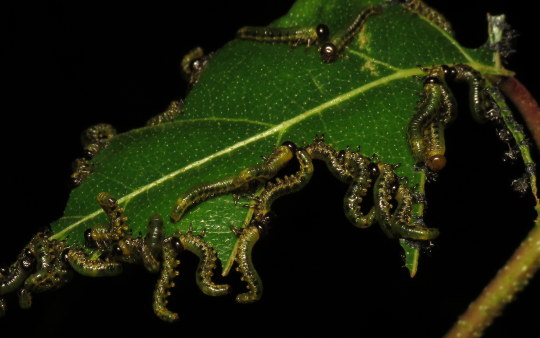
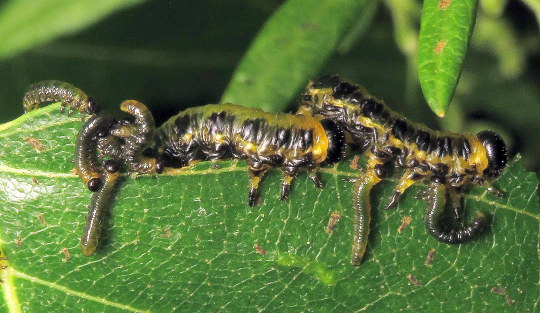

Bug of the Day
Man, these dusky birch sawflies (Nematus latitarsus) were going to town on the birch in the field we were in. Larval aggregations are impressive defoliators :-)
#Nematus latitarsus#Nematus#dusky birch sawfly#sawfly#Tenthredinidae#Hymenoptera#insect#birch#defoliator#larval aggregation#BotD#bug of the day
181 notes
·
View notes
Text

Gentleman with flower - Carel Willink , 1926.
Dutch, 1900-1983
Oil on canvas , 67.5 x 37.8 cm.
59 notes
·
View notes
Note
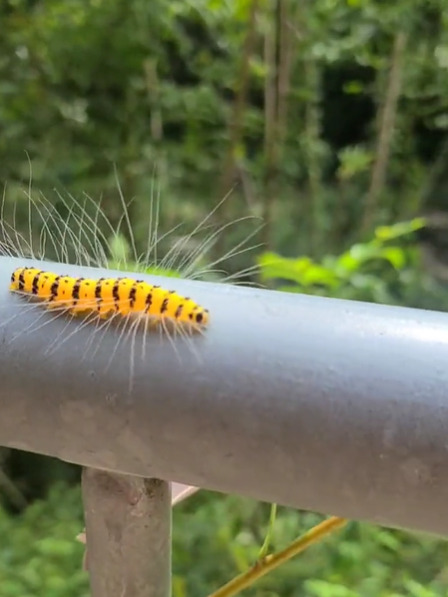
do you know who this friend is? they were spotted in japan and I'm making this id request on the behalf of a twitter user. hopefully the photo isn't too blurry/low quality since I had to take a screenshot from the video they posted :')
The closest match I could find is an Ailanthus defoliator, Eligma narcissus. So if it's not that, I'd say it's almost certainly another moth in the same family, Nolidae.
117 notes
·
View notes
Text

It just turned midnight for me, but hey. I’m busy busy. Merry Christmas from a few main characters in Consume Me. Hey… who’s Isobel???…. More on her later!
9 notes
·
View notes
Text

Nose art on a 1956 Fairchild C-123 Provider on display during Oshkosh 2023
#Fairshild#C-123#Provider#nose art#Thunderpig#airshow#Oshkosh#Vietnam era aircraft#cargo plane#Military transport#defoliant aircraft
15 notes
·
View notes
Text
That the term "military chemical compound" is specifically differentiated from chemical warfare agents is a kind of fascinating rhetorical sleight of hand. "Riot control" agents, herbicides, respiratory irritants, incendiaries, and smoke materials including even white phosphorus can be considered "military chemical compounds" and not chemical weapons*. You can do an awful lot of damage with defoliants and certainly white phosphorus or an irritant like chlorine, but you still get to say you weren't using chemical weapons since congrats, you stopped short of like. sarin. Interesting way to allow for certain permissible methods of harm, in contrast to those you (nominally) label out-of-bounds
*this is according to US classifications
#not that treaties/conventions will really hold back a country that desperately wants to do atrocities w regulated/banned weapons#but i think it's interesting the efforts made to sidestep even those somewhat toothless agreements#like. the us specifically did not ratify the geneva convention on chemical weapons until after vietnam so they could keep using defoliants#and yes schedule 1 chemical weapons like vx are surely 'worse' than like tear gas. however they are all still weaponized chemicals#and i think it's interesting how the lines get drawn#also wild to me that chlorine is considered a respiratory irritant and therefore a permissible military chemical? ok??#when the 1925 geneva convention on chemical weapons was created due to the use of gas in wwi (mustard yes but also chlorine)??#chemical warfare#skravler
29 notes
·
View notes
Text
Incredibly convenient that my migraine prodrome sometimes mimicks allergy symptoms. Totally fun and not confusing at all.
#this is sarcasm of course#turns out my eye itches intensly because I'm getting a migraine and not because i'm allergic to all of the plants I defoliated today#probably didn't get kief in my eye so that's good i guess#migraine meds are helping while flushing my eye and using compresses did not#¯\_(ツ)_/¯#chronic illness#chronic migraine
2 notes
·
View notes
Text
Ya’know I have a new appreciation for Zero Escape
After playing some Escape Room visual novels, I really appreciate Zero Escape’s puzzles and its feedback. Like it has a few puzzles that are brain busters or can be confusing but it does offer feedback. If you fail a puzzle or do something wrong the characters will say something.
Characters can also help and point you in the right direction. Its something I never really thought about. And it also has character interactions which just develops the characters better. Some of the indie games I play lack that feedback on certain puzzles making it more frustrating.
#Zero Escape#Puzzle Games#Visual Novels#if you want a game that has terrible feedback#defoliation on the switch#some puzzles are just easy#some need some thought#but many are just banging your head into a wall because the game has no clues and bad hints
3 notes
·
View notes
Text
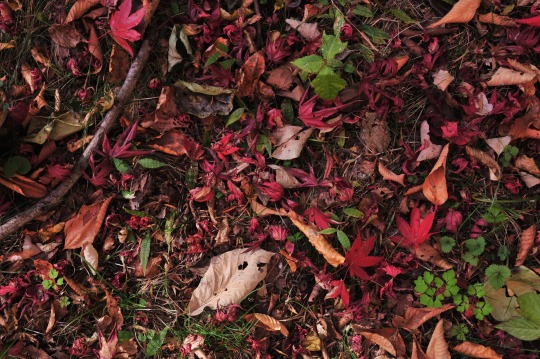
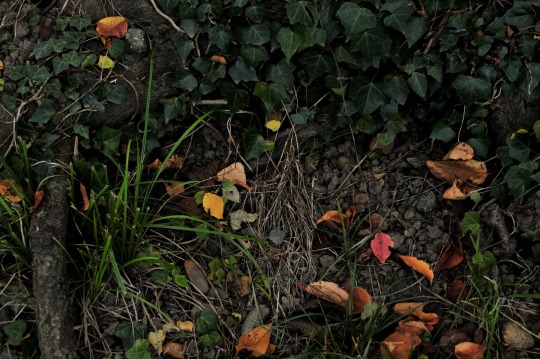


「落ち葉」
#fallenleaves#defoliation#deadleaves#autumnleaves#autumn#nikond300#photograph#photography#落ち葉#落葉#枯れ葉#紅葉#秋#写真#いつかの写真#写真好き#写真で伝えたい私の世界#写真好きな人と繋がりたい#歩楽里写真部
1 note
·
View note
Text
Ancient redwoods recover from fire by sprouting 1000-year-old buds
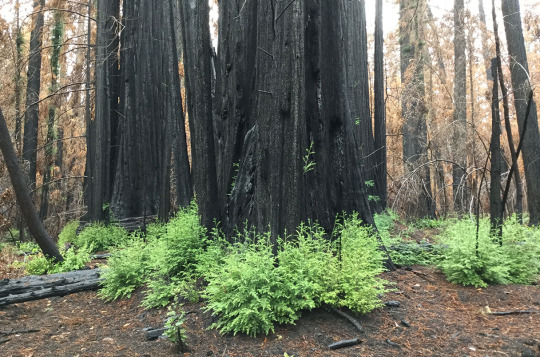
Article | Paywall free
When lightning ignited fires around California’s Big Basin Redwoods State Park north of Santa Cruz in August 2020, the blaze spread quickly. Redwoods naturally resist burning, but this time flames shot through the canopies of 100-meter-tall trees, incinerating the needles. “It was shocking,” says Drew Peltier, a tree ecophysiologist at Northern Arizona University. “It really seemed like most of the trees were going to die.”
Yet many of them lived. In a paper published yesterday in Nature Plants, Peltier and his colleagues help explain why: The charred survivors, despite being defoliated [aka losing all their needles], mobilized long-held energy reserves—sugars that had been made from sunlight decades earlier—and poured them into buds that had been lying dormant under the bark for centuries.
“This is one of those papers that challenges our previous knowledge on tree growth,” says Adrian Rocha, an ecosystem ecologist at the University of Notre Dame. “It is amazing to learn that carbon taken up decades ago can be used to sustain its growth into the future.” The findings suggest redwoods have the tools to cope with catastrophic fires driven by climate change, Rocha says. Still, it’s unclear whether the trees could withstand the regular infernos that might occur under a warmer climate regime.
Mild fires strike coastal redwood forests about every decade. The giant trees resist burning thanks to the bark, up to about 30 centimeters thick at the base, which contains tannic acids that retard flames. Their branches and needles are normally beyond the reach of flames that consume vegetation on the ground. But the fire in 2020 was so intense that even the uppermost branches of many trees burned and their ability to photosynthesize went up in smoke along with their pine needles.
Trees photosynthesize to create sugars and other carbohydrates, which provide the energy they need to grow and repair tissue. Trees do store some of this energy, which they can call on during a drought or after a fire. Still, scientists weren’t sure these reserves would prove enough for the burned trees of Big Basin.
Visiting the forest a few months after the fire, Peltier and his colleagues found fresh growth emerging from blackened trunks. They knew that shorter lived trees can store sugars for several years. Because redwoods can live for more than 2000 years, the researchers wondered whether the trees were drawing on much older energy reserves to grow the sprouts.
Average age is only part of the story. The mix of carbohydrates also contained some carbon that was much older. The way trees store their sugar is like refueling a car, Peltier says. Most of the gasoline was added recently, but the tank never runs completely dry and so a few molecules from the very first fill-up remain. Based on the age and mass of the trees and their normal rate of photosynthesis, Peltier calculated that the redwoods were calling on carbohydrates photosynthesized nearly 6 decades ago—several hundred kilograms’ worth—to help the sprouts grow. “They allow these trees to be really fire-resilient because they have this big pool of old reserves to draw on,” Peltier says.
It's not just the energy reserves that are old. The sprouts were emerging from buds that began forming centuries ago. Redwoods and other tree species create budlike tissue that remains under the bark. Scientists can trace the paths of these buds, like a worm burrowing outward. In samples taken from a large redwood that had fallen after the fire, Peltier and colleagues found that many of the buds, some of which had sprouted, extended back as much as 1000 years. “That was really surprising for me,” Peltier says. “As far as I know, these are the oldest ones that have been documented.”
... “The fact that the reserves used are so old indicates that they took a long time to build up,” says Susan Trumbore, a radiocarbon expert at the Max Planck Institute for Biogeochemistry. “Redwoods are majestic organisms. One cannot help rooting for those resprouts to keep them alive in decades to come.”
-via Science, December 1, 2023
#redwoods#california#wildfire#climate change#extreme heat#natural disasters#botany#plant biology#photosynthesis#santa cruz#hopepunk#sustainability#climate hope#united states#good news#hope
13K notes
·
View notes
Text

The biggest I've seen in a published source in the wild is an 80-fold error in a reported distance, which I think came from a series of at least three unit conversions and area/length misinterpretations.
Square Units [Explained]
Transcript Under the Cut
[Arrows point to each consecutive panel.]
[Megan is looking at her phone, with Cueball standing next to her.] Megan: This newly-described insect can devour up to a square inch of grass per day. Cueball: Oh, neat.
[Cueball is speaking to Ponytail.] Cueball: ...it eats a square inch, or 6 cm², of grass per day...
[Ponytail is speaking to Hairy.] Ponytail: ...a 6-centimeter (2½ inch) square of grass, or 36 cm²...
[Arrows now point to each consecutive conversion.] Written out of panel: ...a 36 centimeter square, or over a square foot... Written out of panel: ...a square foot, or 900 cm²... Written out of panel: ...a 900 cm (30 foot) square... Written out of panel: ...a 30 foot square of grass (900 square feet)... Written out of panel: ...a 900 foot square, or almost 20 acres... Written out of panel: ...20 acres (8 hectares, or 80,000 square meters)... Written out of panel: ...an 80,000 meter (80 km) square... Written out of panel: ...a square 80 km wide, or roughly 2,500 square miles... Written out of panel: ...a 2,500-mile square, or twice the land area of Australia, per day...
[An arrow points from the last conversion to the last panel.] [Hairbun is looking at her phone, with White Hat, Danish and Blondie standing next to her.] Hairbun: Did you hear about this insect that defoliates the entire land area of Australia twice a day? White Hat: Gosh! Danish: Wow. Blondie: I hope at least it's contained there...
765 notes
·
View notes
Text
"In the ‘60s one either believed that America was being greened or that America was being morally defoliated. You either believed that this was the dawning of the age of Aquarius or you believed that we were on the eve of destruction. I sometimes think that the most malignant aspect of the period was the extent to which everyone dealt exclusively in symbols. Certain artifacts were understood to denote something other than themselves, something supposedly abstract; some positive or negative moral value. And whether the artifact was positively or negatively charged depended not on any objective reality at all but on where you stood, where the polarization had thrown you. Marijuana was a symbol. Long hair was of course a symbol, and so was short hair. Natural foods were a symbol – rice, seaweed, raw milk, the whole litany. I found myself in situations during the late ‘60s where my refusal to give my baby unpasteurized milk was construed as evidence that I must be “on the other side.” Probably an undercover. In fact, it meant nothing except that I had grown up around farms and I had known children who got tuberculosis and brucellosis from drinking raw milk. But this was a period in which everything was understood to have some moral freight, some meaning beyond itself. And in fact, nothing did; that was the peculiarity of the decade. In a way it was very touching, this whole society so starved for meaning that it made totems out of meaningless artifacts. The whole country was like a cargo cult. But it was also very destructive. Because nothing meant what it was supposed to mean."
Joan Didion's 1975 Commencement Address at UC Riverside
1K notes
·
View notes
Text
I am not 100% sure if I am tracing this correctly, but it looks like music for the series was done by Gerhard Trede and Beatrice Witkins. I think Trede’s music may have been used within the episodes, and wikipedia says that Witkin wrote the theme song. According to Discogs she only ever released two tracks (one of which I can find on Spotify), but Chicago punk-ish band The Defoliants covered (and expanded? Hard to tell without access to the full credits from the PBS show) the song and it is amazing.
youtube
On a related note, Gerhard Trede was a German composer who lived from 1913-1996. His music is on Spotify and is also amazing.
Wild, Wild World of Animals - orig. end theme
youtube
Amazing track to this 70's era documentary show. What'd I give to find it in a longer form but no luck so far.
#beatrice witkins#wild wild world of animals#covers of tv theme songs#the defoliants#PBS in the 1980s
226 notes
·
View notes
Photo

Customer: AGENT ORANGE MUSCLE CARS DMV: was a powerful mixture of chemical defoliants used by US military during Vietnam War that caused major health problems for soldiers, their families as well as the Vietnamese population Verdict: DENIED
#California license plate with text AGT ORNG#DENIED#bot#ca-dmv-bot#california#dmv#funny#government#lol#public records
159 notes
·
View notes